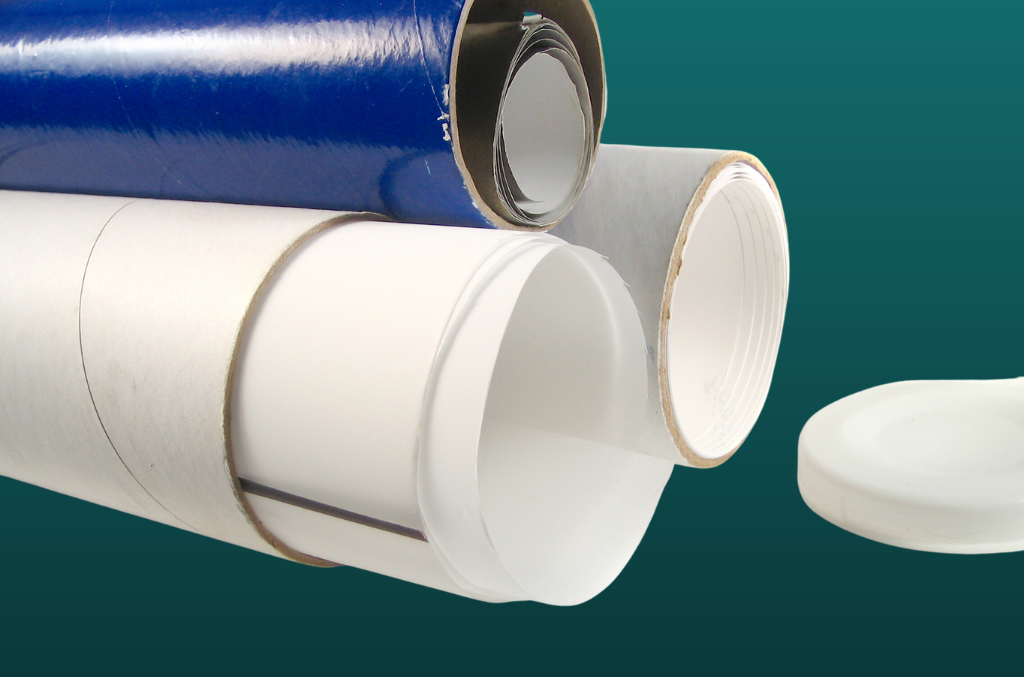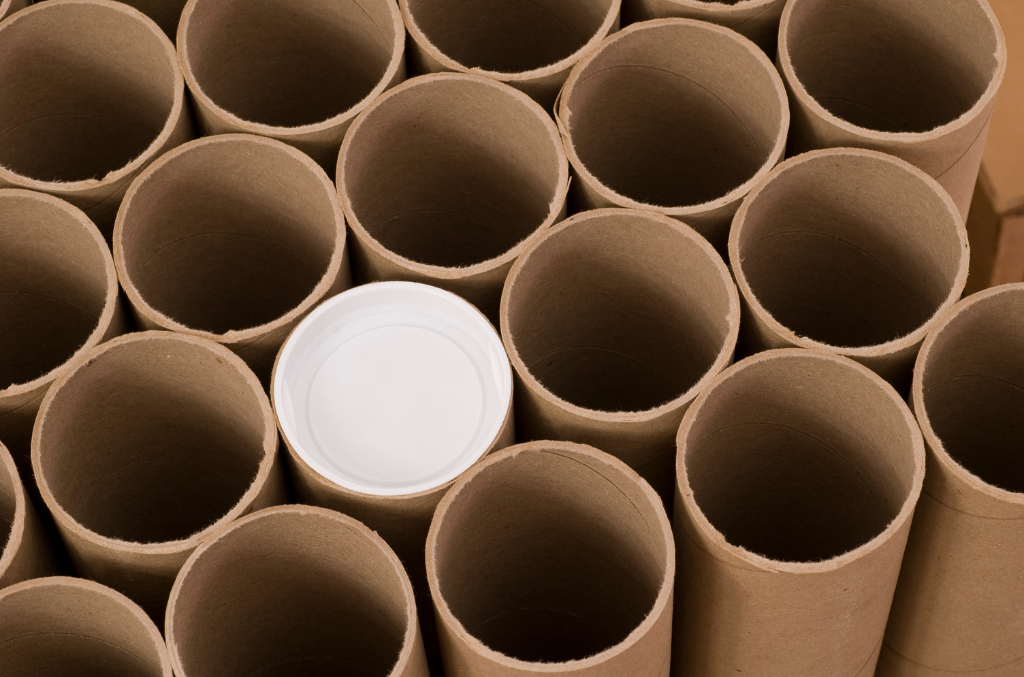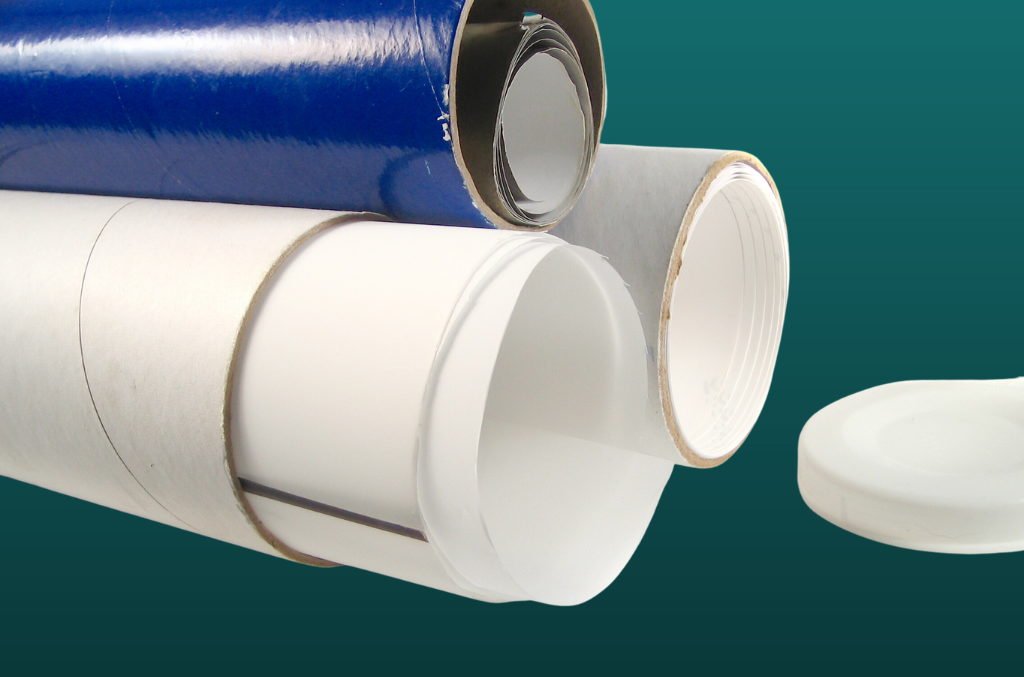Mailing Tubes
The Complete Guide to Mailing Tubes: Their Types, Uses and Benefits
Mailing tubes, also known as shipping tubes, are cylindrical containers used to ship rolled documents or long, narrow items. These items can range from blueprints and posters to fishing rods and telescopes. The primary purpose of mailing tubes is to provide a safe and secure method of shipping that prevents damage to the contents.
Mailing tubes are usually made from strong and durable materials like cardboard or plastic. They are designed in a way that can withstand the rigors of transit, ensuring that your items reach their destination in the best possible condition.
In This Article
Importance of Mailing Tubes in Packaging
In the packaging industry, mailing tubes play a crucial role. They not only provide an efficient packing solution but also help in reducing packaging waste. As they are reusable and recyclable, mailing tubes are a more environmentally friendly option compared to other types of packaging.
Furthermore, mailing tubes are a cost-effective shipping solution. They are lightweight, which helps to keep shipping costs down. Plus, their unique shape makes them less likely to be damaged during shipping, which can save businesses significant costs related to damaged goods.
In the age of e-commerce, where goods are frequently shipped across the globe, the importance of mailing tubes cannot be overstated. Whether you’re a business owner shipping products to customers, a manufacturer distributing goods to retailers, or an individual sending a gift to a loved one, mailing tubes can provide a reliable and practical solution for your shipping needs.
Understanding Different Types of Mailing Tubes

Mailing tubes come in a variety of types, each designed to meet specific mailing and shipping needs. Let’s delve into the common types of mailing tubes available in the market.
Cardboard Mailing Tubes
Cardboard mailing tubes are perhaps the most common type you’ll encounter. They are made from sturdy, thick-walled cardboard that provides excellent protection for the contents inside. These tubes are ideally suited for sending documents, posters, blueprints, and other similar items. They are lightweight, cost-effective, and come in an array of sizes to accommodate different needs.
Plastic Mailing Tubes
Plastic mailing tubes offer a higher level of durability compared to their cardboard counterparts. They are water-resistant, making them an excellent choice for items that need protection from moisture. Plastic mailing tubes are ideal for shipping sensitive documents, artwork, and any items that could potentially be damaged by water or damp conditions.
Heavy-Duty Mailing Tubes
For items that require extra protection, heavy-duty mailing tubes are the way to go. These tubes are made from exceptionally durable materials and are designed to withstand rough handling during transit. Whether you’re shipping industrial parts, high-value goods, or delicate items, heavy-duty mailing tubes can provide the level of protection you need.
Custom Mailing Tubes
Custom mailing tubes are designed to meet specific shipping needs. They can be customized in terms of size, material, and design. For businesses looking to enhance their brand visibility, custom mailing tubes can be printed with logos, brand colors, or any other design elements. This not only provides a unique unboxing experience for the recipient but also serves as a powerful marketing tool.
By understanding the different types of mailing tubes, you can make an informed decision and choose the one that best suits your shipping needs.
The Science Behind Mailing Tubes
Mailing tubes are more than just simple cylindrical containers. There’s a good deal of science involved in their design and manufacturing process. Let’s explore how mailing tubes are made and why their circular shape is optimal for mailing.
How Mailing Tubes are Made
The process of making mailing tubes begins with the raw material. For cardboard tubes, this typically involves pulping wood to create a thick, fibrous substance. The pulp is then rolled into sheets, which are cut into strips. These strips are wound around a mandrel (a cylindrical object) at an angle, creating a spiral pattern. This pattern adds strength and rigidity to the tube.
Plastic tubes, on the other hand, are made using a process called extrusion. In this process, plastic pellets are heated until they become a liquid, which is then pushed through a circular die to form a tube. The tube is cooled and cut into the desired length.
Why Circular Shape is Optimal for Mailing
The circular shape of mailing tubes offers several advantages for shipping. Firstly, the round shape provides equal distribution of pressure. This means the tube can resist impacts from all directions, protecting the contents inside.
Secondly, the circular shape leaves no corners or edges, which are often the first places to get damaged in transit. This makes the tube more durable and capable of withstanding rough handling.
Lastly, the cylindrical design allows for efficient use of space. Mailing tubes can be stacked or packed closely together without wasting space, making them an efficient choice for bulk shipping.
The science behind mailing tubes is a testament to their effectiveness as a shipping solution. With their strong construction and optimal shape, they are designed to keep your items safe and secure during transit.
Industry Applications of Mailing Tubes

Mailing tubes find their applications in various industries, each with its unique requirements. Let’s explore how different sectors utilize mailing tubes.
Mailing Tubes in Manufacturing/Distribution
In the manufacturing and distribution sector, mailing tubes are used to transport goods that are long, cylindrical, or can be rolled up, such as blueprints, charts, and banners. They provide a cost-effective and secure way to deliver products to retailers or customers without damage.
Mailing Tubes in Healthcare
In the healthcare industry, mailing tubes are often used to ship sensitive medical equipment, prosthetics, and supplies. The sturdy design of these tubes ensures that these vital healthcare items reach their destination in perfect condition.
Mailing Tubes in Education
Educational institutions frequently use mailing tubes to send and store diplomas, certificates, and other important documents. Mailing tubes protect these documents from creases and tears, ensuring they remain in pristine condition.
Mailing Tubes in Building Services
In building services, mailing tubes are essential for transporting architectural plans, blueprints, and drawings. These documents are large and can be easily damaged if not properly protected. Mailing tubes provide a safe and convenient solution for transporting these important items.
As you can see, mailing tubes serve a critical role in various industries, providing a reliable and efficient method of shipping and storing various items. Their durability, versatility, and cost-effectiveness make them a preferred choice for many businesses.
Tips for Choosing the Right Mailing Tubes
Choosing the right mailing tubes for your needs can seem like a daunting task, given the variety of options available. However, by considering a few key factors, you can select the most suitable mailing tubes for your needs. Here are some tips to guide you.
Consider Your Shipping Needs
Firstly, consider what you are shipping. If you are sending documents, posters, or other paper goods, a standard cardboard mailing tube may suffice. However, for heavier or fragile items, you might need a heavy-duty or plastic mailing tube for added protection.
Consider the Material of the Mailing Tubes
The material of the mailing tube is another crucial factor to consider. Cardboard tubes are lightweight and cost-effective, making them suitable for most general shipping needs. Plastic tubes, on the other hand, offer more durability and protection against moisture, making them ideal for shipping sensitive items.
Consider the Size and Weight of Your Items
The size and weight of your items also play a significant role in deciding the right mailing tube. Choose a tube that is large enough to fit your items without them being too tight or loose. Remember, an oversized tube can lead to your items moving around during transit, which can cause damage.
In terms of weight, ensure the tube is sturdy enough to hold your items. Heavy-duty tubes are designed to handle heavier items, while standard tubes are suitable for lighter goods.
By factoring in your shipping needs, the material of the tubes, and the size and weight of your items, you can make a well-informed decision when choosing mailing tubes. This can help ensure your items are shipped safely and efficiently, saving you time and money in the long run.
Proper Usage and Maintenance of Mailing Tubes
Once you’ve selected the appropriate mailing tubes, knowing how to use and maintain them correctly is crucial. This not only ensures the safe delivery of your items but also extends the lifespan of the tubes. Here are some tips on the proper usage and maintenance of mailing tubes.
How to Properly Package Your Items in Mailing Tubes
When packing your items, make sure they fit snugly into the tube without forcing them in. For documents or posters, roll them around a cylinder before placing them into the tube to prevent creasing. If there’s any extra space, fill it with packing material to prevent the items from moving during transit.
Always remember to secure the ends of the tube properly. Most mailing tubes come with end caps that can be pushed into place. Ensure these are secured tightly to prevent the contents from falling out.
How to Store Mailing Tubes Correctly
Proper storage of mailing tubes can extend their usability. Store them in a cool, dry place away from direct sunlight. Stacking them horizontally is often the best way to prevent them from getting crushed. If the tubes are not in use, keep the end caps on to prevent dust or moisture from getting inside.
Avoid exposing mailing tubes to extreme temperatures or moisture, as this can weaken their structure, especially for cardboard tubes. Plastic tubes are more resistant but should still be stored properly to maintain their shape and strength.
By using and maintaining mailing tubes correctly, you can maximize their potential and ensure your items are always shipped in the best possible condition. This not only reflects well on your business but also leads to satisfied customers.
Regulatory Aspects of Mailing Tubes
When using mailing tubes for shipping, it’s essential to be aware of the regulatory aspects. This includes understanding postal regulations for mailing tubes and ensuring compliance with these rules. Let’s delve deeper into these aspects.
Understanding Postal Regulations for Mailing Tubes
Postal regulations for mailing tubes can vary depending on the postal service and the destination of the package. Generally, the regulations cover aspects like the size and weight of the package, the type of items that can be shipped, and the packaging requirements.
For instance, some postal services have maximum size limits for mailing tubes. Exceeding these limits may result in additional charges or the package being rejected. Similarly, there could be restrictions on shipping certain items in mailing tubes, such as hazardous materials or perishable goods.
Ensuring Compliance With Regulations
To ensure compliance with postal regulations, it’s crucial to do your research beforehand. Check the regulations of the postal service you plan to use and make sure your package meets all the requirements.
This includes accurately measuring the dimensions and weight of your package, properly packaging your items, and correctly labeling the package. If you’re shipping internationally, you may also need to fill out customs forms or other paperwork.
Non-compliance with postal regulations can lead to delays, fines, or even the return of your package. Therefore, understanding and adhering to these regulations is crucial when using mailing tubes for shipping.
By being aware of the regulatory aspects of mailing tubes, you can ensure a smooth and hassle-free shipping process. This not only saves you time and money but also guarantees that your package reaches its destination safely and promptly.
Different Brands of Mailing Tubes
With numerous brands offering mailing tubes in the market, choosing the right one can seem overwhelming. However, knowing about the top brands and what differentiates them can guide you in making an informed decision. Let’s highlight some of the leading brands in the market.
Highlighting Top Brands in the Market
-
Uline: Uline is a well-known brand in the packaging industry. Their mailing tubes are lauded for their durability and variety. They offer tubes in different materials, sizes, and colors, catering to a wide range of shipping needs.
-
Yazoo Mills: Yazoo Mills is another reputable brand in the market. They specialize in producing high-quality paper tubes and cores. Their mailing tubes are praised for their superior strength and eco-friendliness.
-
Chicago Mailing Tube Co.: Chicago Mailing Tube Co. offers custom mailing tubes made to your specifications. Their tubes are known for their excellent construction and ability to withstand tough shipping conditions.
-
Spiral Paper Tube & Core: This brand is recognized for its commitment to sustainability. Their mailing tubes are made from 100% recycled paper, making them a great choice for environmentally conscious businesses.
What Differentiates These Brands
Each of these brands brings something unique to the table. Uline offers a wide variety, Yazoo Mills is known for quality and sustainability, Chicago Mailing Tube Co. provides customization options, and Spiral Paper Tube & Core is committed to eco-friendliness.
When choosing a brand, consider the unique selling points of each and how they align with your needs and values. Whether it’s durability, variety, customization, or sustainability, there’s a brand out there that’s the perfect fit for your mailing tube needs.
By understanding the different brands of mailing tubes, you can choose a product that not only meets your shipping requirements but also aligns with your brand image and values.
Frequently Asked Questions (FAQ)
At IP Products, we offer a wide range of Mailing Tubes to meet your needs. Browse our collection today and find the perfect Mailing Tubes for your job. We are dedicated to quality, customer satisfaction, and fast shipping.

